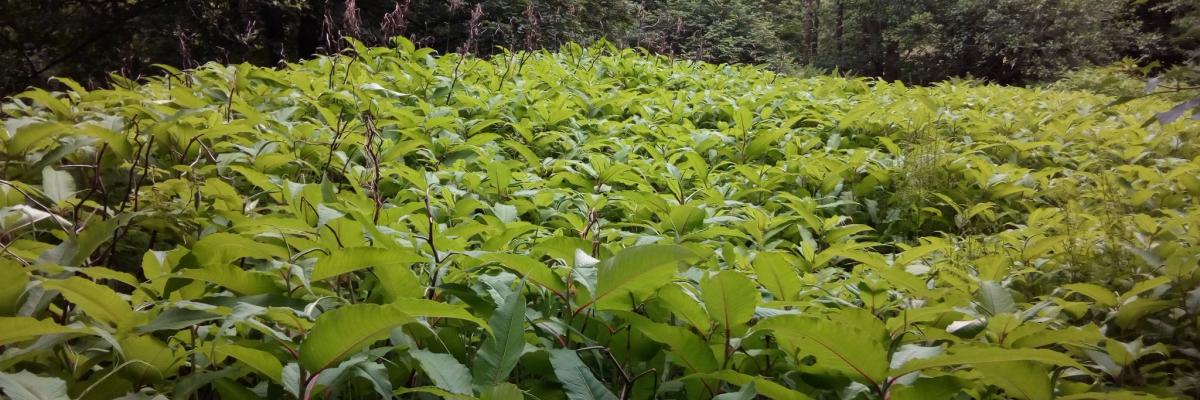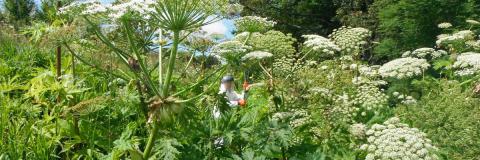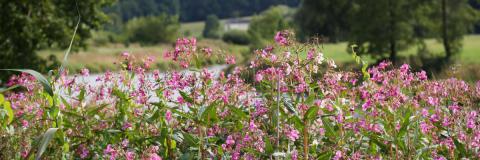These invasive non-native plants are ones that we've quite often come across also growing along riverbanks. They aren't on our wider project 'hit-list' and we don't actively survey for their presence.
Some of them - like Himalayan knotweed - if we come across while out controlling other species, we'll control it too. Others - like coneflower - are locally invasive and the local fishery trust may be implementing a strategic control strategy.
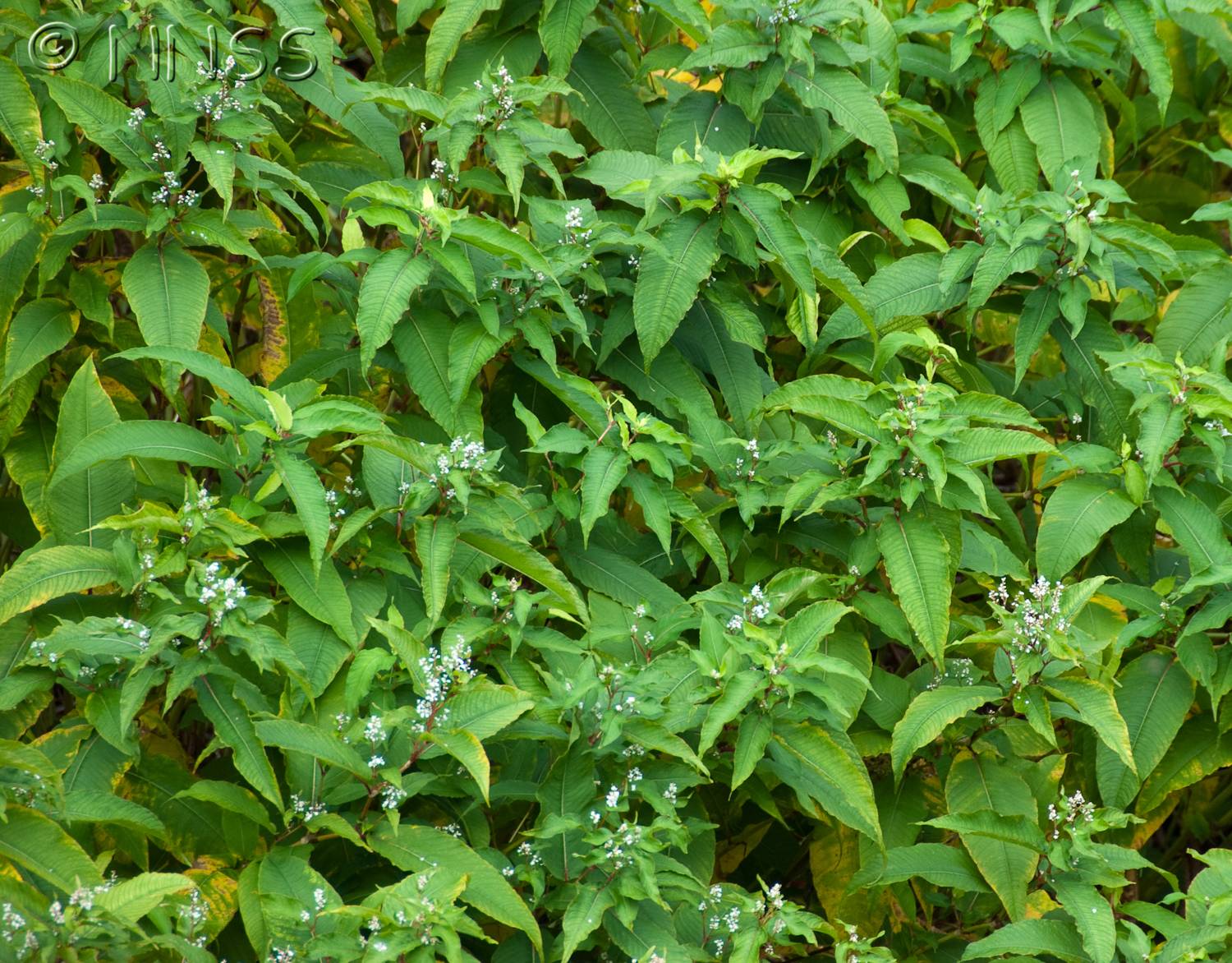
Himalayan knotweed
The plant
Himalayan knotweed (Persicaria wallichii) is rhizomatous perennial, growing up to 2m tall with small pinkish or white flowers. The leaves are slender and up to 20cm long. It grows in damp grasslands and riverbanks.
Like Japanese knotweed it spreads predominately by vegetative means - fragments of rhizome or pieces of stem containing nodes. It rarely sets seed in GB.
It grows in dense stands and excludes all other vegetation and native flowers.
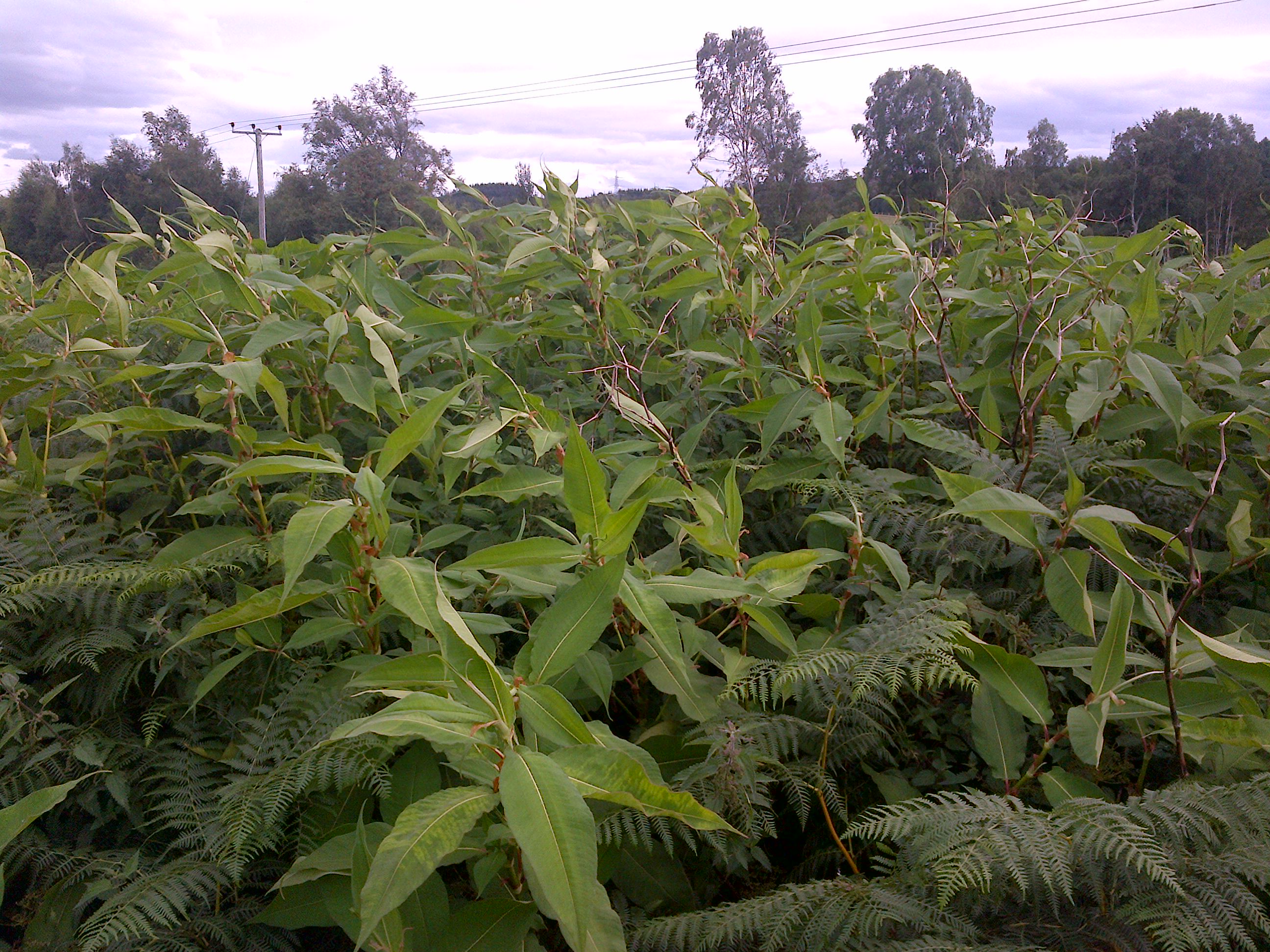
Control
We've found quite an amount of Himalayan knotweed throughout our project area as we've been out and about treating Japanese knotweed, so we tend to treat it while we are there, using a herbicide spray.
This knotweed can regenerate from plant fragments - so DO NOT CUT! Cutting, strimming or mowing will contribute to it's spread and is ineffective as a control method as the plant simply regrows from the robust underground rhizome.
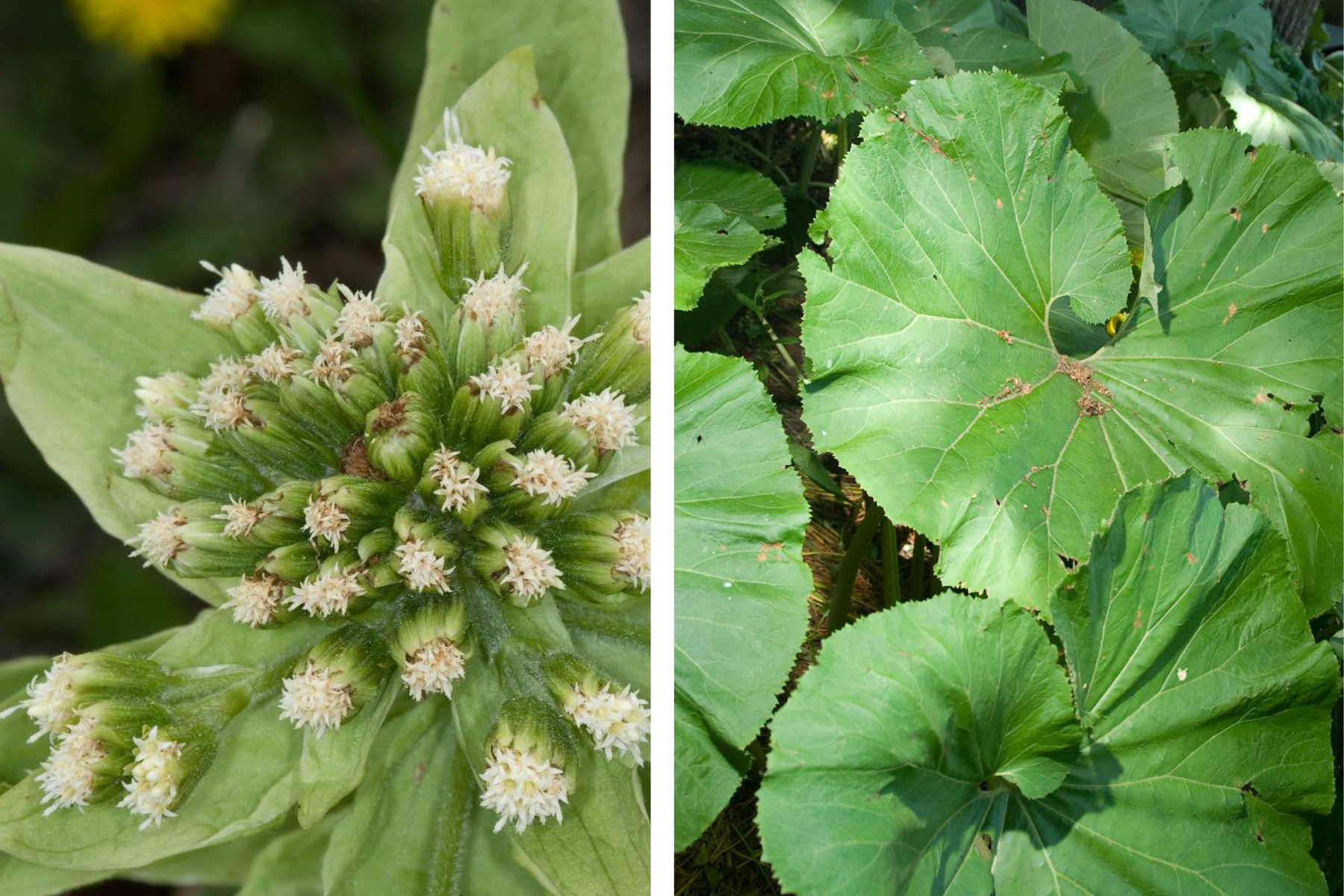
Giant Butterbur
Giant butterbur (Petasites japonicus) can reach up to 2m high. It has a stout flowering stem with many creamy white flowers which appear before the leaves. The kidney-shaped leaves are enormous - 30cm to 1m across - and block out light and suppress native vegetation. Underground is a tough rhizome which grows rapidly enabling single-clone populations to establish quickly and significantly alter existing ecosystems.
Scattered populations are found within our project area, particularly around the Moray - Inverness areas. Control is by application of pesticide to the leaves.
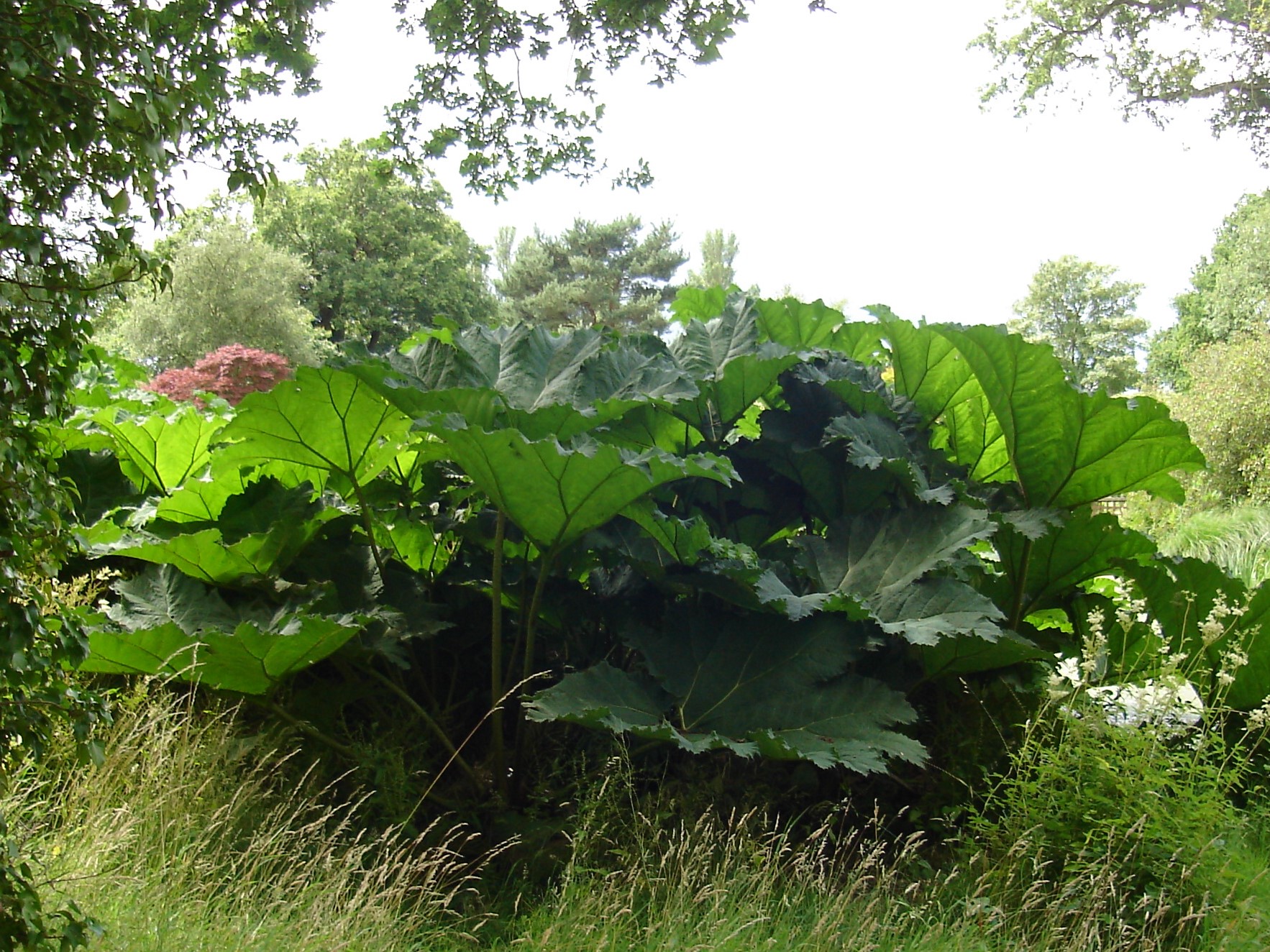
Gunnera - Giant Rhubarb
Gunnera (Gunnera tinctoria) is a fast growing clump-forming perennial which can grow up to 2m in height and has huge leathery leaves with short bristles and spines. It is a popular garden ornamental plant that has become well established on the Scottish west coast and islands. It produces vast quantities of seed which are spread readily and can also regenerate from small fragments of rhizome.
It displaces native vegetation and can destroy whole ecosystems. It has also contributed to erosion on soft coastal cliffs and blocked drains and streams contributing to flooding.
Read more about Gunnera
Gunnera species identification guide
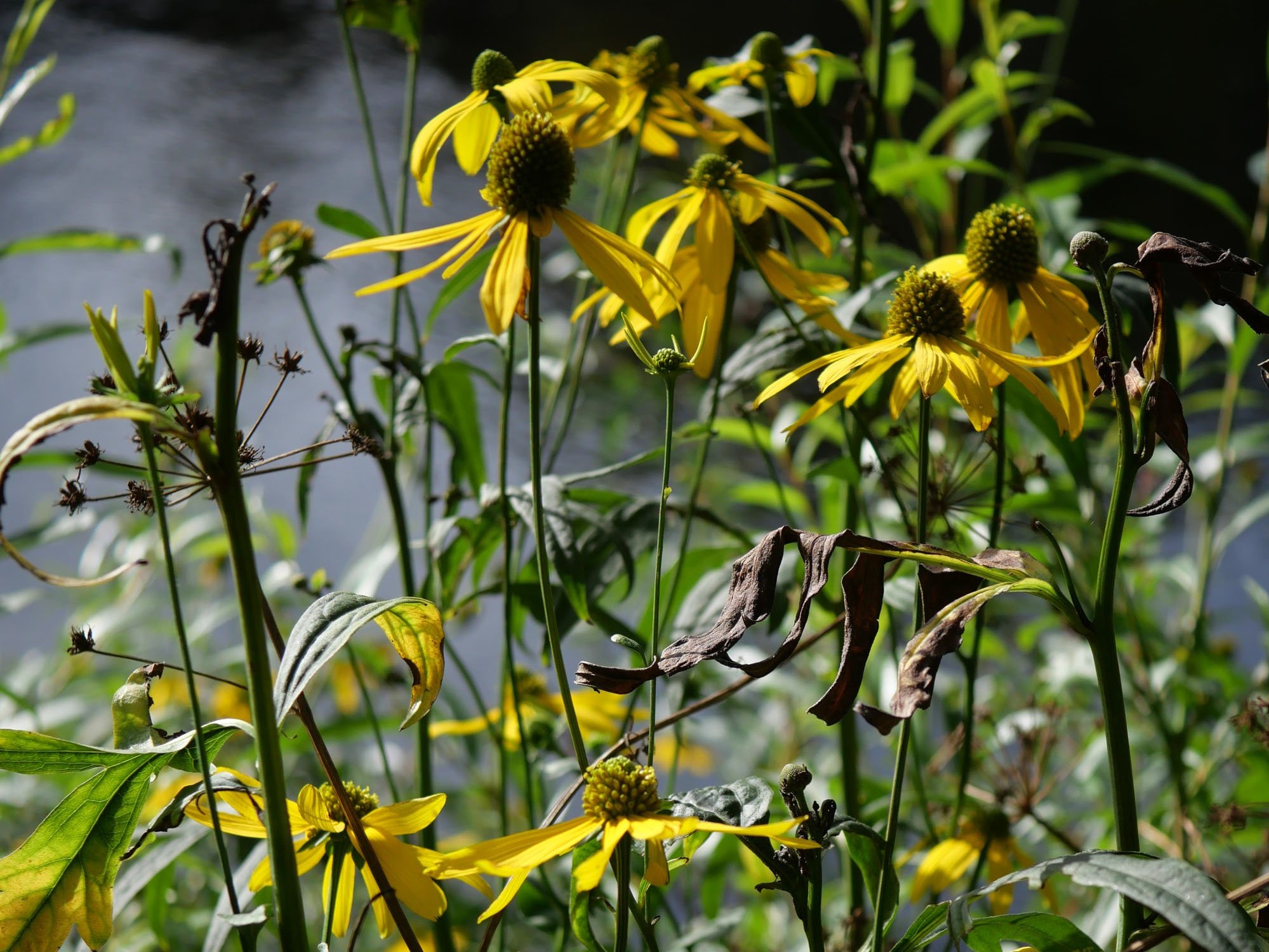
Coneflower
Cut-leaved coneflower (Rudbeckia laciniata) is a popular garden flower, but in a few locations has escaped gardens and spread into the wild. It is a member of the aster family and has large yellow daisy-like flowers growing to a height of 2-3m. Its natural habitat is wet sites along stream banks and wet woodlands so it has readily colonised riverbanks in the countryside.
Coneflower is present specifically in the Cromarty Firth Fishery Trust area on the Garrie Island in the River Conon.

